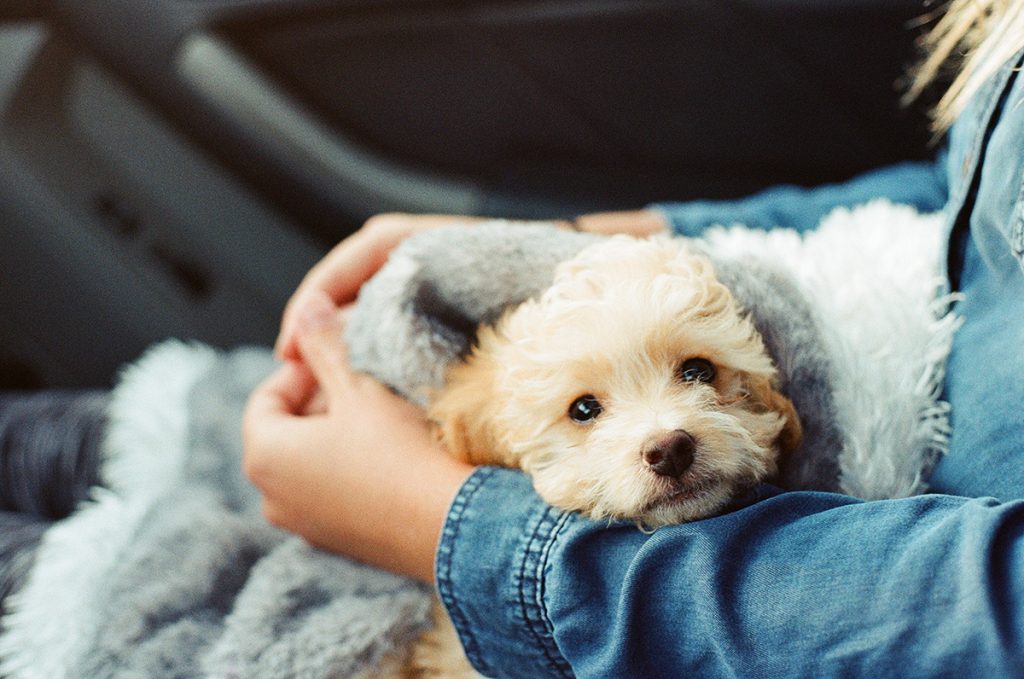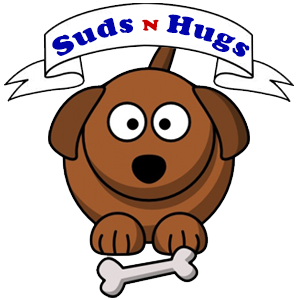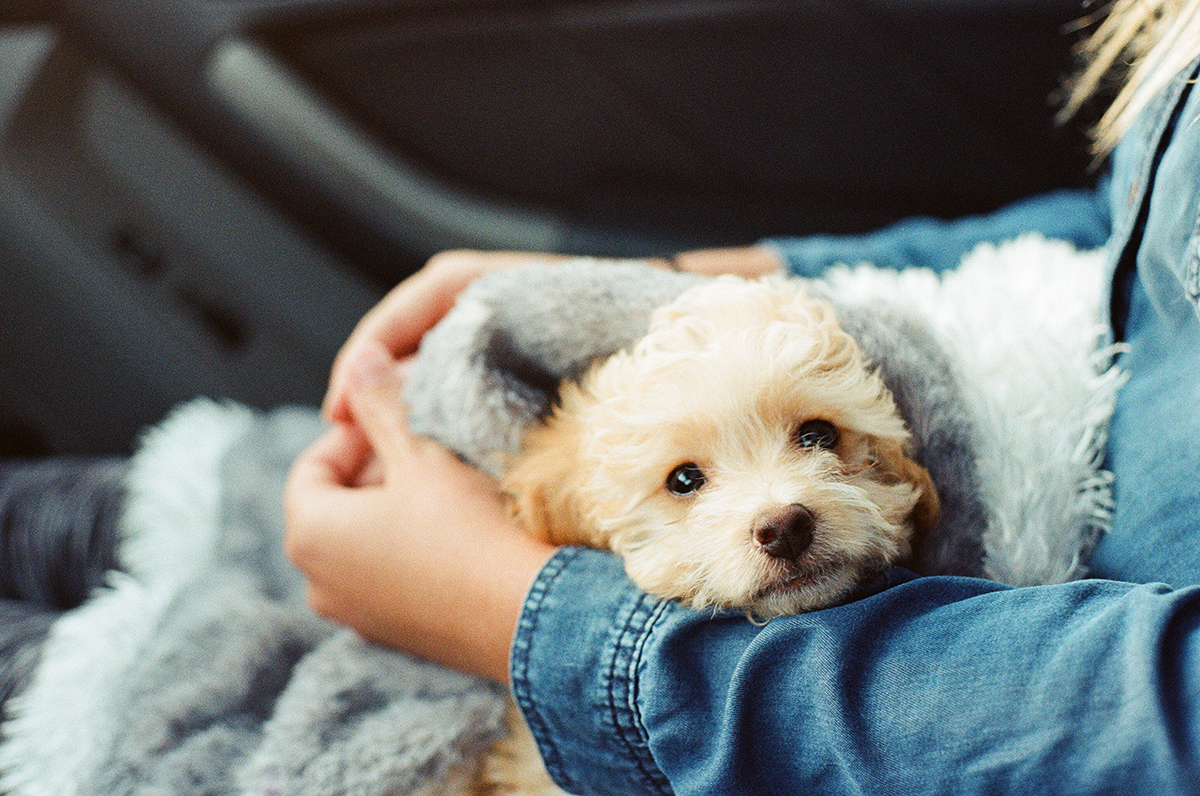
Similar to humans, puppies are born without teeth and go through the process of teething. From birth to six months, a puppy’s teeth go through a lot of changes. From early and temporary teeth, to sore gums, to the growth of 28 baby teeth, teething is not a comfortable process. Your puppy may target all kinds of things, including your furniture, for relief. It is important for new dog owners to understand the process of teething so they can best handle their dog as it ages.
Birth to 2 Weeks
Most puppies are born without teeth. During their first two weeks of life, you will notice your puppy nursing and first opening their eyes. During this time, it is good to have them checked by a veterinarian, introduce them to socialization, and get used to the vet experience.
Weeks 2 to 4
At 2-4 weeks, narrow-edged teeth called incisors begin to emerge. Puppies have 6 incisors on both the bottom and top jaw. Premolars and molars will also begin to grow behind the canines at 3-6 weeks, with three on the top and bottom of each side. At 4 weeks, needle-like canines will begin to appear to frame the incisors.
Weeks 5 to 8
At 6-8 weeks of age, the last molars will appear. Then at 8 weeks, your puppy’s permanent teeth will begin to push out the deciduous or “milk teeth.” The milk teeth can also fall out on their own as the roots are absorbed by the body. If they don’t fall out in time, your puppy may appear to have a double set of teeth. In order to give permanent teeth room to grow, these retained baby teeth should be taken out by a veterinarian. A crowded mouth can push teeth out of alignment, resulting in difficulty eating, and poor dental hygiene.
By this time, all of your puppy’s 28 teeth are expected to come in. At this age, puppies should start to learn how to eat moist and soft puppy food.
[box title=”The Purpose of Each Dog Tooth” border_width=”2″ border_color=”#1e73be” border_style=”solid” align=”center”] Different kinds of teeth serve different functions. With some breeds, the shape of the jaw may impact how each type of tooth functions. Most jaws have a v-shaped upper and lower jaws, which allow for the mouth to be opened wide for grasping and capturing prey. Here are some of the functions for each type of tooth.- Canine Teeth: In the wild, dogs use their canine teeth as pointed daggers to inflict stabbing and slashing wounds.
- Molars: Dogs have 8 premolars in the upper and lower jaw. They also have four molars on the top and six on the bottom. The extra molars are used to crush and process vegetables and bones.
- Carnassial Teeth: Dogs have special carnassial teeth composed of premolars and molars. When the dog bites of chews, these teeth act like scissors as they pass each other.
Weeks 12 to 16
At around 8 weeks, breeders will often let their puppies go to their new owners’ homes. The baby teeth will continue to shed and permanent adult teeth will start to come in. This process is painful for dogs. One of the reasons why puppies become chew-maniacs is that during teething, when new teeth grow in, the gums become sore. The act of chewing helps relieve the discomfort. Provide puppy safe chew toys to keep them away from your shoes or furniture. This is also a good time to start socializing, to look and touch the inside and outside of its mouth, and to prepare them to teeth brushing
[box title=”Signs to Keep an Eye on During Teething” border_width=”2″ border_color=”#1e73be” border_style=”solid” align=”center”] There is a natural progression to expect when your puppy develops new teeth. It is important to begin handling your puppy’s mouth while it’s young so you cna check for any potential tooth problems. Any type of facial swelling, changes in eating habits, unexpected night awakenings, or rubbing of the face are signs of possible oral discomfort. Have your puppy checked by a veterinarian if you see two teeth occupying one spot, blood on your dog’s toys, broken or cracked teeth, crooked teeth, or loose adult teeth.[/box]6 Months and Older
At 6 months, all puppy teeth should be gone and adult teeth should have grown in. If your puppy has any baby teeth left, let your vet know so they can be removed. Permanent teeth will replace milk teeth tooth for tooth and add four premolars and 10 molars. By 7 months of age, most puppies have about 42 permanent teeth. It is a good idea to get your pup used to the idea of tooth brushing around 6 months when it’s adult teeth start to come in. Regular brushing will prevent plaque, bad breath, disease, and other medical problems. Try to brush your puppy’s teeth daily or at least once or twice a week.
[box title=”What A Proper Bite Looks Like” border_width=”2″ border_color=”#1e73be” border_style=”solid” align=”center”] When a dog’s mouth is closed, they should have a normal “bite”. A normal bite is where the lower canine teeth are situated in front of the upper canines. The upper incisors and carnassial should overlap the lower ones. Also the upper premolar points should fit into the spaces between the lower premolars. Malocclusion is when the “bite” is abnormal. This can occur for certain dog breeds due to differences in the shape of the jaw and mouth. Flat-faced dog breeds have a normal malocclusion because their lower jaw is longer than the upper. However, the teeth will fit incorrectly with each other, causing mouth damage when the dog chews. Talk to your veterinarian about the malocclusion and they will let you know your options. [/box]


